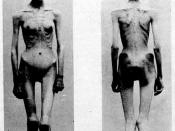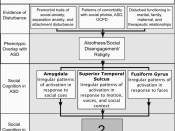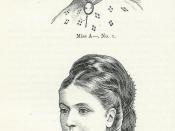Despite what many people may be aware of, anorexia nervosa is a symptom not only of the person (generally women) but of society and culture itself. While many people today see anorexia as a result of a superficial fashion standard, interestingly this is only a part of why women choose to starve themselves. Susan Bordo explains anorexia as a contemporary condition thoroughly in her article, and it is easily relatable to Nineteenth Century hysteria. On many levels both conditions can be interpreted as a form of pre-political protest, where women are subconsciously attempting to gain control in their lives, and challenge being oppressed in patriarchal culture.
The historical factors influencing the construction of hysteria as a female condition in the late nineteenth century where closely tied to patriarchy and feminism.
As Freud theorized, women often felt trapped in their gender roles and the patriarchal system and so felt they had to rebel.
Often this rebellion came out in a form of "creative" hysteria as a sort of escape from the boredom and futility of their daily life. Also historically, the women's suffrage movement associated women who were battling for their rights and were being assertive as a sign of hysteria.
Bordo explains the more contemporary disorder anorexia nervosa as another way, like hysteria of women expressing their longing for control. Bordo explains how there is basically no natural body, but rather that it is constituted by culture, she describes anorexia on a three level axis. The first being the dualistic axis, which explains the human existence as being separate into body and soul. Seeing the body as separate, a cage, or even an enemy gives women power over the urges of their physical bodies. Connected to this is the second axis, the control axis, where Bordo links anorectics with body-builders...


